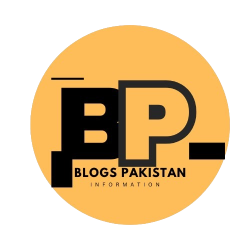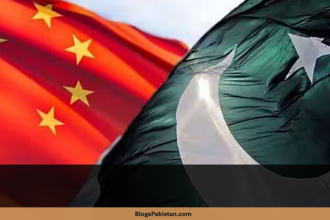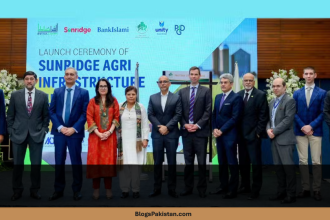Pakistan is once again turning to its Gulf allies to shore up its faltering foreign exchange reserves, seeking a $1 billion commercial loan from three major UAE banks to meet a critical condition set by the International Monetary Fund (IMF). Finance Minister Muhammad Aurangzeb personally led virtual negotiations with Sharjah Islamic Bank, Abu Dhabi Islamic Bank, and Ajman Bank, underscoring Pakistan’s commitment to macroeconomic stabilization and structural reforms. With the IMF requiring Pakistan to raise its reserves to $13.9 billion by June 30, this loan could provide vital breathing room, boosting the State Bank of Pakistan’s import cover to three months. However, questions remain about interest rates, repayment terms, and the broader economic impact of further external borrowing.
Pakistan’s Strategic Push for External Financing
Virtual Talks with Top UAE Lenders
In May 2025, the Finance Ministry convened online sessions with three UAE-based lenders—Sharjah Islamic Bank, Abu Dhabi Islamic Bank, and Ajman Bank—to explore a $1 billion commercial line of credit.
These discussions were framed as part of Pakistan’s ongoing dialogue with international partners to support fiscal objectives and bolster development financing ARY NEWS.
The Minister highlighted the government’s progress toward macroeconomic stability, which he attributed to rigorous structural reforms and a shift to a productivity-led, export-focused growth model ARY NEWS.
IMF Prerequisites: Reserve Targets
A primary driver of these talks is an IMF stipulation requiring Pakistan to boost its foreign exchange reserves to $13.9 billion by the end of June 2025 ARY NEWS.
As of mid-May, Pakistan’s reserves were hovering close to $14 billion, sufficient to cover roughly three months of imports, but precarious given external debt obligations and import pressures Dawn.
Anatomy of the $1 Billion Loan Request
Commercial Terms Under Negotiation
While precise terms remain under wraps, sources indicate negotiations may center on a floating interest rate tied to global benchmarks such as SOFR plus a spread, possibly in the 6–7% range, similar to recent commercial loans secured by Pakistan The Express Tribune.
In the first three quarters of FY 2025, Pakistan secured only $504 million from commercial sources, underscoring the challenge of attracting private financing in the aftermath of last year’s debt crisis Dawn.
Role of Guarantees and Guarantees from MDBs
Some analysts expect that the Asian Development Bank or other multilateral institutions may provide partial guarantees to sweeten the deal and lower borrowing costs, as seen in recent ADB-backed loan arrangements The Express Tribune.
Economic Context and Implications
Shoring Up Reserves Amid Debt Pressures
Pakistan faces over $22 billion in external debt repayments this year, nearly half of which are short-term or bilateral obligations, according to Fitch Ratings.
Fitch warns that failing to secure adequate financing could trigger a new liquidity squeeze, derail IMF reviews, and jeopardize future access to both public and private capital Reuters.
Balancing External Borrowing with Reform
While the commercial loan may alleviate immediate liquidity constraints, Pakistan must continue fiscal consolidation and SOE restructuring to restore creditor confidence.
The Finance Minister has repeatedly emphasized the government’s rightsizing of the federal apparatus, privatization program, and enhanced reporting mechanisms for discrimination-free investment Arab News PK.
Stakeholder Perspectives
Finance Ministry’s Stance
Minister Aurangzeb framed the loan request as part of a broader strategy to transition from crisis management to sustainable growth, asserting that quality commercial partnerships are essential for long-term stability Arab News PK.
Regional and International Reactions
- UAE Banks: Senior executives praised Pakistan’s reform agenda and signaled willingness to deepen bilateral financial ties, provided macro conditions hold steady Arab News PK.
- IMF: Approval of this loan will be pivotal for unlocking the next tranche of the $7 billion bailout program, which has already disbursed $2 billion in 2025, including a $1.4 billion climate fund installment Arab News.
- Credit Ratings: A successful facility could support Pakistan’s bid for an upgrade from “junk” status, a key objective cited by the Finance Ministry Reuters.
Looking Ahead: Risks and Opportunities
Potential Impact on Pakistan’s Economy
- Short-Term Relief: Influx of $1 billion would shore up import cover and reduce reliance on costly emergency measures.
- Debt Service Costs: Higher commercial rates mean increased outflows over the medium term, potentially crowding out fiscal space if not balanced by growth.
- Market Confidence: Successful execution may catalyze further inflows from Islamic finance and Sukuk markets, diversifying Pakistan’s funding base.
Roadmap to the June 30 Deadline
With just over a month to secure final commitments, Pakistan’s negotiators are under the gun:
- Finalize Term Sheet: Agree on margins, tenor (likely 3–5 years), and guarantee structures.
- Obtain MDB Support: Lock in any ADB or World Bank guarantees to lower spreads.
- IMF Review: Leverage the deal to clear the pending IMF mission and unlock additional tranches.
- Parliamentary Ratification: Ensure legislative approval for external borrowing to avoid delays.
This $1 billion pursuit underscores not only Pakistan’s urgent need for liquidity but also its broader quest to reform, diversify, and stabilize its economy in an increasingly challenging global environment.










